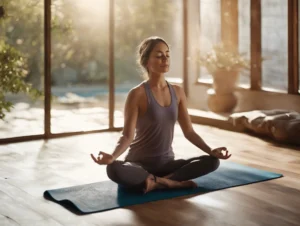What Is Intentional Living?
Intentional living means building your life around your core values and making conscious choices rather than simply reacting to whatever comes your way. It’s about taking ownership of your time, energy, and actions to create a life that feels meaningful and fulfilling to you.
Living with intention doesn’t mean having a perfect life or never making mistakes. Instead, it means approaching each day with awareness and purpose, making decisions that align with what truly matters to you.
The Benefits of Living Intentionally
Research shows that living intentionally can significantly improve your mental health and overall well-being. According to a 2021 study, people who take more values-based actions experience lower daily distress and greater daily well-being.
When you live with intention, you:
- Reduce stress and anxiety by eliminating decision fatigue
- Experience greater fulfillment and satisfaction
- Develop stronger relationships with others
- Feel more present and engaged in your daily life
- Create a sense of purpose and meaning
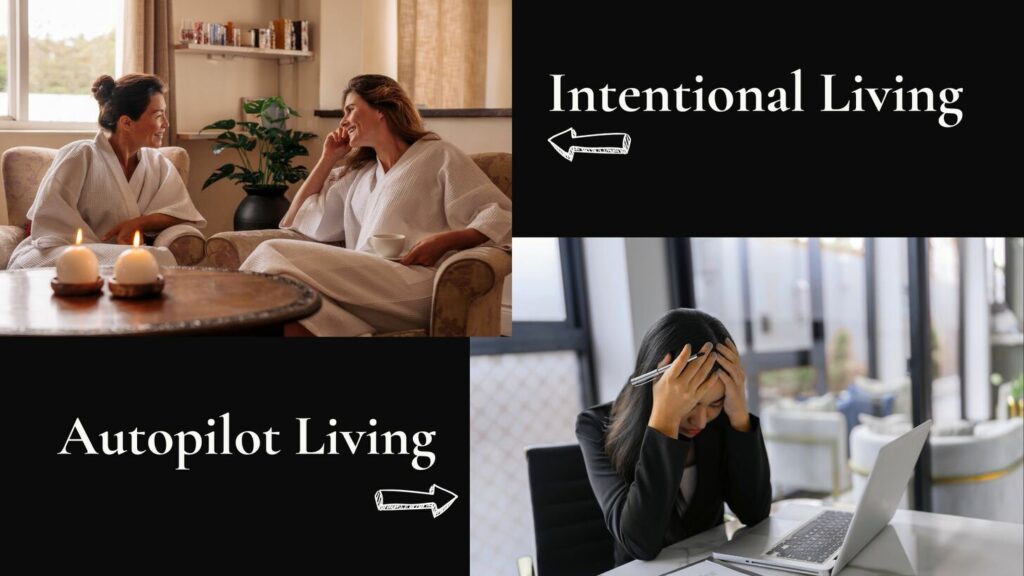
7 Daily Practices for Intentional Living
Transforming your life doesn’t happen overnight. It’s the small, consistent actions you take each day that create lasting change. Here are seven practical habits you can incorporate into your daily routine to start living more intentionally:
1. Begin With a Morning Intention
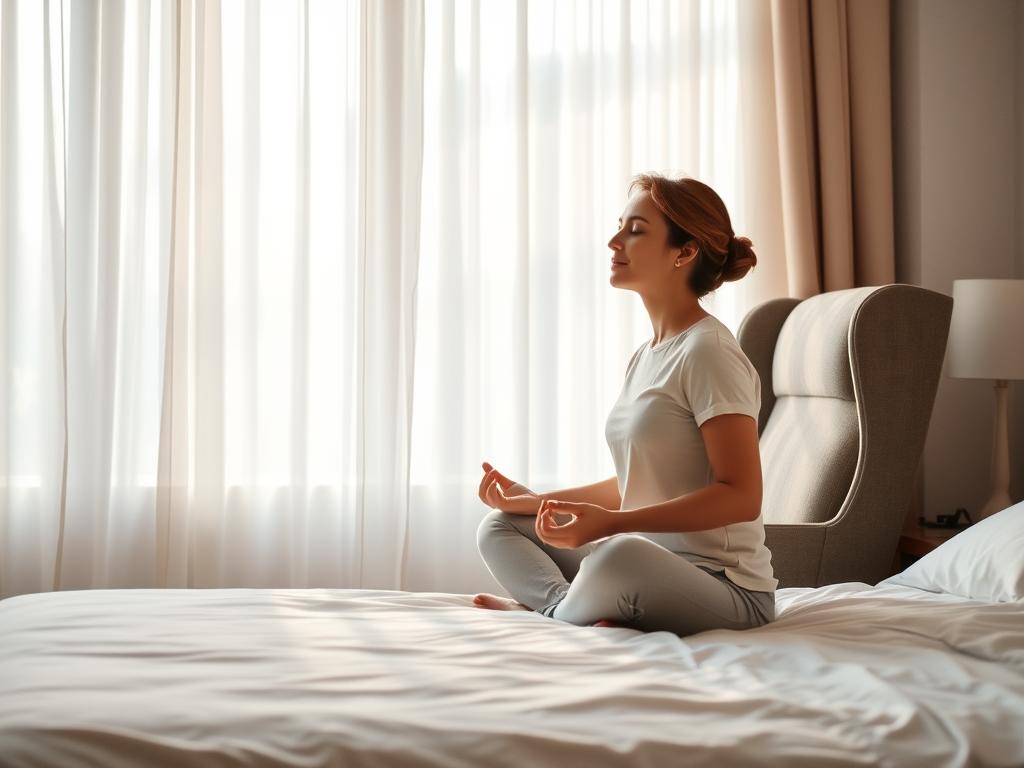
How you start your day sets the tone for everything that follows. Instead of immediately reaching for your phone, take a few moments to set an intention for the day. This doesn’t need to be complicated – just a few words or a sentence that reminds you of how you want to show up today.
Try asking yourself: “What is one value I want to embody today?” or “How do I want to feel at the end of this day?” Your intention might be something like “Today, I choose to be patient with myself and others” or “Today, I will make time for what truly matters.”
2. Identify Your Core Values
You can’t live according to your values if you don’t know what they are. Take time to reflect on what matters most to you. Consider these questions:
- What brings you the most fulfillment and joy?
- What would you regret not doing or being if your life ended tomorrow?
- What qualities do you most admire in others?
- When do you feel most alive and engaged?
Your values might include things like family, creativity, health, learning, spirituality, or community. Once you’ve identified 3-5 core values, write them down and keep them somewhere visible as a daily reminder.

3. Practice Mindful Transitions
Most of us rush from one activity to another without pause. This keeps us in a state of constant reactivity rather than intentional action. Try implementing brief mindful transitions between activities.
Before moving from one task to the next, take three deep breaths. Check in with yourself: How are you feeling? What do you need right now? What’s your intention for the next activity? These micro-moments of awareness can transform your day.

Ready to Deepen Your Intentional Living Practice?
4. Create Technology Boundaries
Digital distractions are one of the biggest obstacles to intentional living. Our devices constantly pull our attention away from what matters most. Create clear boundaries around technology use:
- Designate specific tech-free times (meals, first hour after waking, last hour before bed)
- Turn off non-essential notifications
- Keep your phone out of sight during focused work or quality time with others
- Use apps that limit your time on social media or other distracting sites

5. Practice the Sacred “No”
Living intentionally means being selective about how you spend your time and energy. This requires learning to say “no” to things that don’t align with your values or priorities, even when they seem like good opportunities.
Before saying “yes” to a new commitment, ask yourself: Does this align with my core values? Will this bring me closer to the life I want? Do I have the capacity for this right now? Remember that saying “no” to one thing means saying “yes” to something else that matters more to you.

6. Create Intentional Spaces
Your environment significantly impacts your mindset and behavior. Create spaces that support your intentions rather than distract from them. This might mean:
- Decluttering areas that feel chaotic or overwhelming
- Creating a dedicated space for activities that matter to you (reading, meditation, creative work)
- Surrounding yourself with visual reminders of your values and goals
- Removing or minimizing things that trigger unhelpful habits
Remember that minimalism isn’t about getting rid of everything – it’s about keeping what aligns with your values and supports your intentions.

7. End With Evening Reflection
Just as you begin your day with intention, end it with reflection. Take a few minutes before bed to review your day:
- What went well today?
- Where did I live according to my values?
- What could I have done differently?
- What am I grateful for today?
- What intention do I want to set for tomorrow?
This practice helps you recognize patterns, celebrate progress, and continuously realign with your intentions. Consider keeping a journal to track your reflections over time.

Building an Intentional Daily Routine
Now that you understand the key practices, let’s put them together into a practical routine. Remember that the goal isn’t perfection but progress – start with small changes and build from there.
| Time of Day | Intentional Practice | Example |
| Morning (First 15-30 minutes) | Set daily intention, mindful breathing | “Today I choose to be present with my family” + 5 deep breaths |
| Mid-morning | Value-aligned focused work | 90 minutes of distraction-free work on your most important project |
| Lunch | Mindful eating, tech break | Eat away from screens, notice flavors and textures |
| Afternoon | Mindful transitions between tasks | Three deep breaths between meetings or activities |
| Evening | Quality connection time | Device-free dinner with family or call with a friend |
| Before bed | Reflection and gratitude | Journal three things that went well and set tomorrow’s intention |
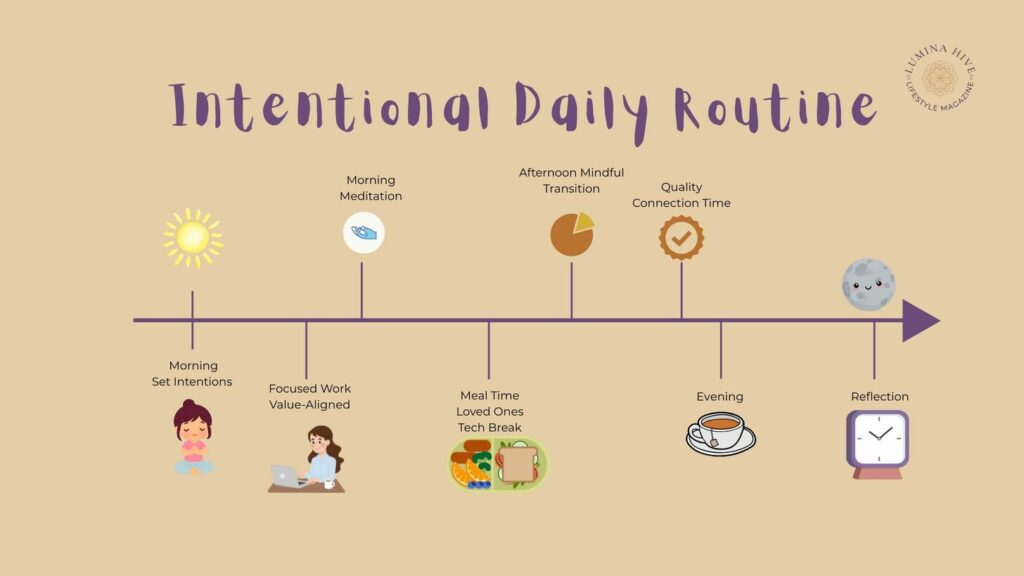
Quick-Start Checklist for Intentional Living
Use this checklist to begin implementing intentional living practices today:
- Identify 3-5 core values that will guide your decisions
- Create a morning ritual that includes setting a daily intention
- Designate at least one tech-free zone or time in your day
- Practice one mindful transition between activities
- Say “no” to one thing that doesn’t align with your priorities
- Create or declutter one space to better support your intentions
- Spend 5 minutes before bed reflecting on your day
Overcoming Common Obstacles to Intentional Living
Living intentionally isn’t always easy. Here are some common challenges you might face and strategies to overcome them:
Analysis Paralysis
Sometimes we get so caught up in trying to make the “perfect” intentional choice that we become paralyzed and make no choice at all.
Solution: Remember that intentional living is a practice, not perfection. Start with small decisions and build your “intentional muscle” over time. When feeling stuck, ask yourself: “What would my future self thank me for doing right now?”
Social Pressure
Friends, family, and society may not understand your new boundaries or priorities, making it difficult to stay committed to your intentions.
Solution: Clearly communicate your values and why they matter to you. Find a community of like-minded people who support your intentional living journey. Remember that your choices don’t need everyone’s approval.
Burnout Prevention
Ironically, trying to live intentionally can sometimes create another form of pressure or perfectionism that leads to burnout.
Solution: Include rest and self-compassion in your intentional living practice. Remember that sometimes the most intentional choice is to take a break, adjust your expectations, or ask for help.
Maintaining Consistency
It’s easy to fall back into autopilot mode, especially during busy or stressful periods.
Solution: Create visual reminders of your intentions in your environment. Schedule regular check-ins with yourself to reassess and recommit to your values. Use the “if-then” planning technique: “If I notice I’m on autopilot, then I’ll take three deep breaths and reconnect with my intention.”

Tools and Resources for Intentional Living
The right tools can make your intentional living journey easier and more sustainable. Here are some resources to support your practice:
Journaling Prompts
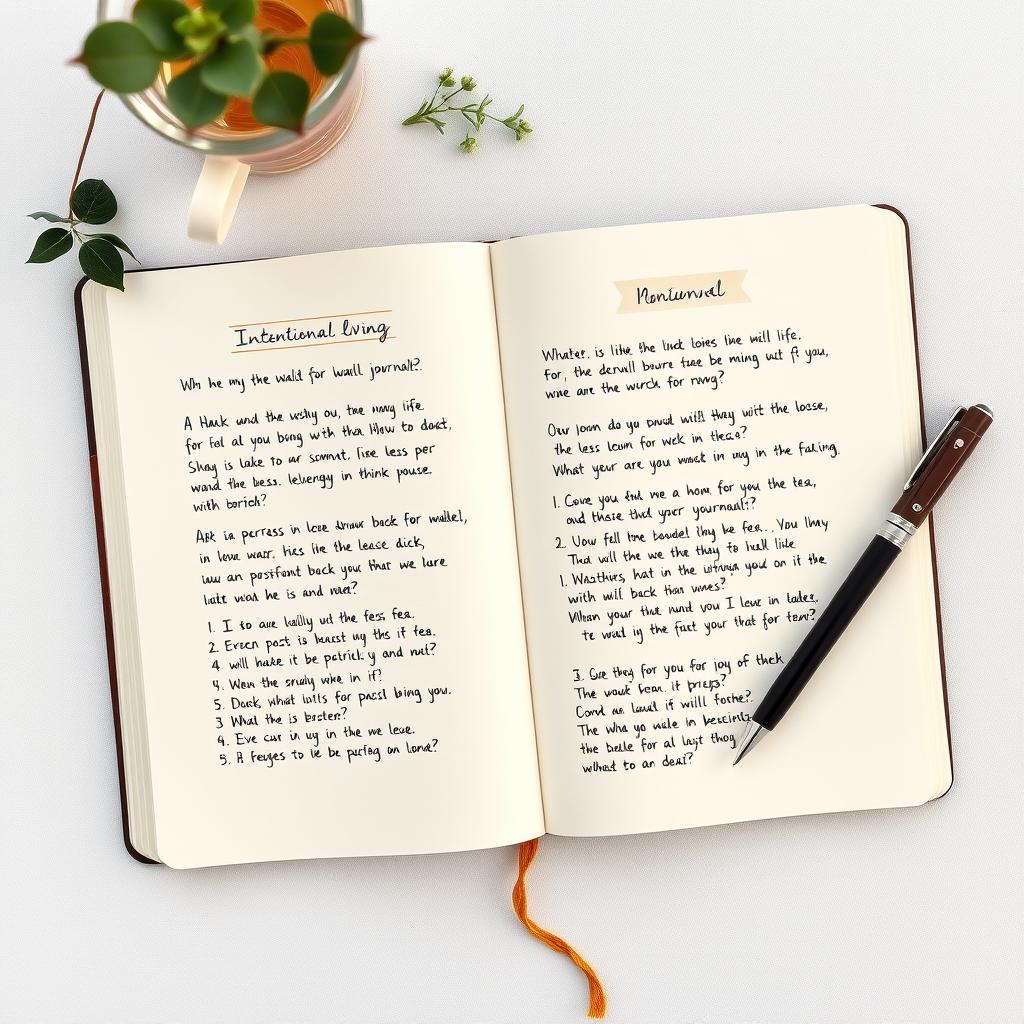
Use these prompts to deepen your self-awareness:
- What made me feel most alive today?
- How did my actions align with my values today?
- What am I holding onto that no longer serves me?
- What would I do today if I knew I couldn’t fail?
- How can I show up more authentically tomorrow?
Mindfulness Exercises
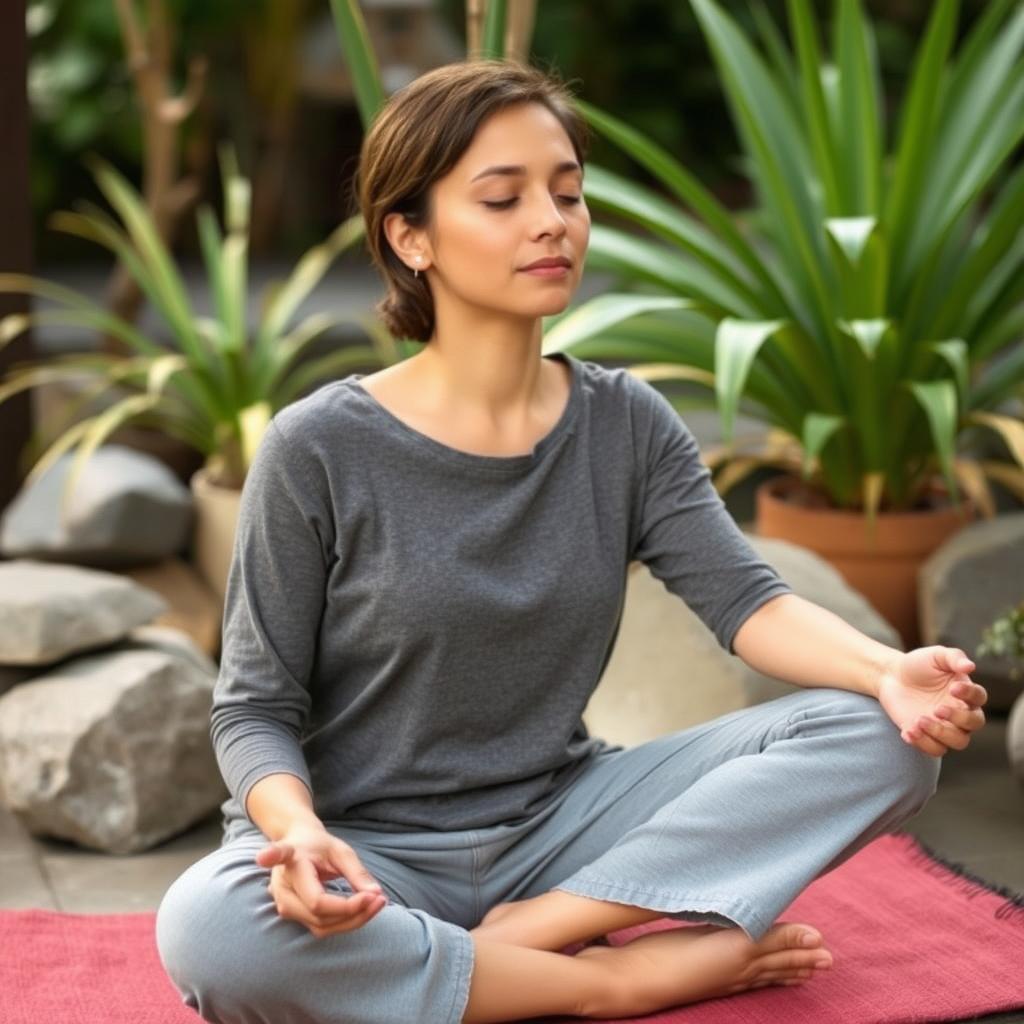
Try these quick mindfulness practices throughout your day:
- Body scan: Notice sensations from head to toe
- 5-4-3-2-1 technique: Notice 5 things you see, 4 things you feel, 3 things you hear, 2 things you smell, and 1 thing you taste
- Mindful breathing: Count your breaths from 1 to 10, then start over
- Gratitude pause: Name three things you’re grateful for right now
Decision-Making Framework
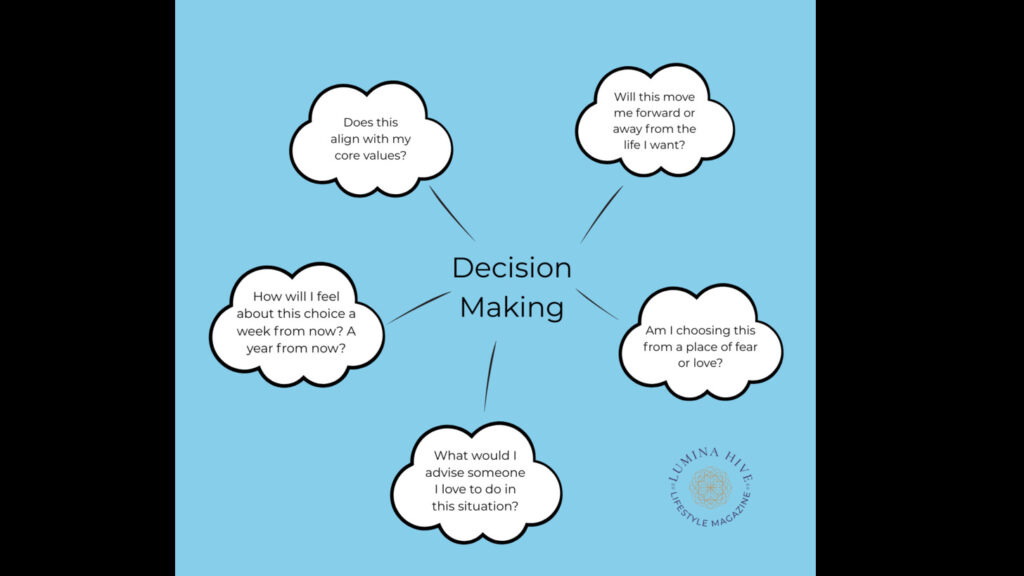
When facing a decision, ask yourself:
- Does this align with my core values?
- Will this move me toward or away from the life I want?
- How will I feel about this choice a week from now? A year from now?
- Am I choosing this from a place of fear or love?
- What would I advise someone I love to do in this situation?
“The key is not to prioritize what’s on your schedule, but to schedule your priorities.”
– Stephen Covey
Start Living Intentionally Today
Living intentionally isn’t about radical transformation overnight – it’s about making small, consistent choices that align with your values and vision for your life. Each time you pause before reacting, each time you choose presence over distraction, each time you say “no” to something that doesn’t serve your highest good, you’re building a more intentional life.
Remember that intentional living is a practice, not a destination. You’ll have days when you feel completely aligned and days when you fall back into old patterns. That’s not failure – it’s part of the journey. What matters is your willingness to begin again, to keep returning to your intentions with compassion and commitment.
The most beautiful thing about intentional living is that you can start right now, in this moment. You don’t need special equipment, extensive training, or perfect circumstances. All you need is the willingness to pause, reflect, and choose consciously.





